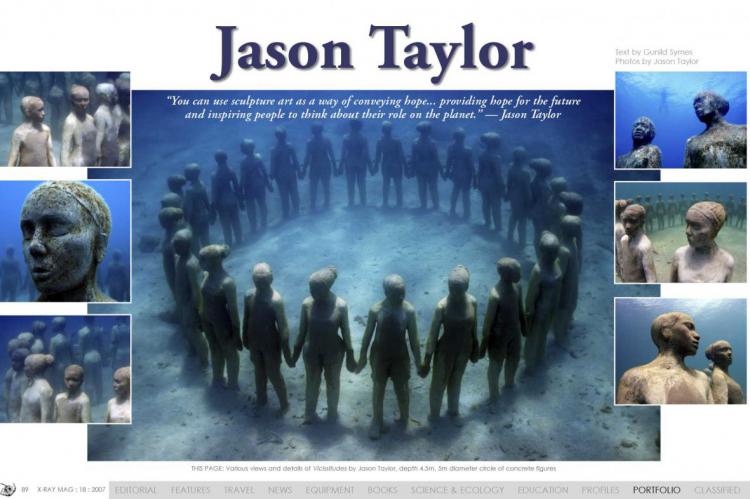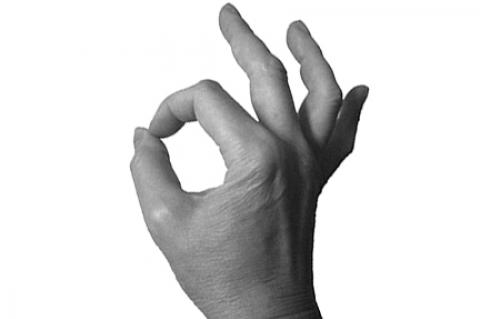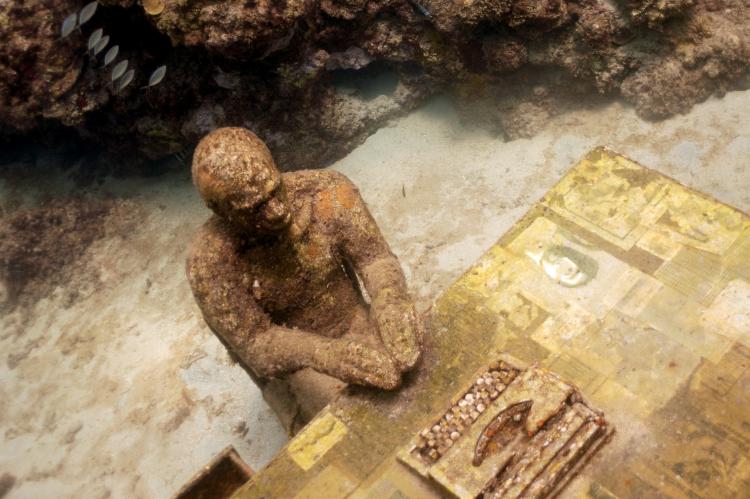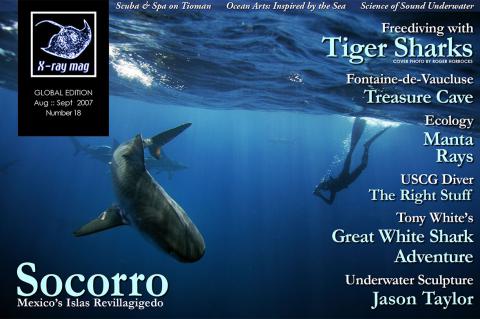Jason Taylor
Not all artificial reefs are shipwrecks or scuttled vessels, tanks or planes. Now divers can enjoy artificial reefs growing on original sculptures mounted underwater. Jason Taylor, a sculptor from England, recently finished a photo-documentation of his underwater sculpture project in Grenada. X-RAY MAG caught up with Taylor to find out how and why he did it.
Tags & Taxonomy
Taylor studied sculpture and painting in London, but he was always fascinated with creating pieces on site in the environment. He said that he never created works for viewing inside a gallery. His sculptures were site-specific, meaning that they were created specifically for the site in which it would be viewed, such as town squares, bridges, plazas, etc. This work is equally important to Taylor.
He grew up in Malaysia, and everyday after school, he went snorkeling. At age 12-13, he made a big adjustment and switched to graffiti art, leaving his mark on various urban surfaces under bridges and on trains. By age 18, graffiti art had lost its luster for Taylor, but he still views this phase as an important one of his development as an artist.
Now, Taylor works in cement or any material he can get his hands on. All of Taylor’s work in Grenada was made from local resources, since conventional materials were too expensive because they had to be imported. In Grenada, Taylor turned to local materials such as bamboo. Taylor started sculptural work as an art project in school. He did a series of workshops in casting and sculpting. But at that point, he was not diving. Later, he got his diver’s certification, and decided to marry the to two great loves of his life, diving and sculpture.
Why did he create his underwater sculpture in Grenada? Well, he lived and worked there for some time as a dive instructor, getting to know the place and the people and allowing them to get to know him, before he started working on his underwater art. Taylor funded the project himself and did most of the construction on the project as well. At first, people thought he was crazy. Taylor explains, “Why was this white guy spending all his money on concrete and then submerging it underwater?” Later, when divers started visiting the site and it became a standard stop for dive and tourist boats, people saw the value of the project in terms of tourism and management of the local reef.
The creative process
Taylor says that his creative process is different every time. “I don’t do a drawing. I just think it through and make a clay model… a mock up of what to do. Then, I cast the forms,” he said. In Vissitudes, casts were taken of the local children along the coast. Then, Taylor filled the casts with fiberglass and silicone and worked each piece out of these materials. Then, he had to figure out how the sculpture should be connected to the sea floor. Some of best ways to do this, he said, is by mounting metal pins into the rock face, but “it’s too expensive”.
So, he had to find places in the gully which were not facing the tidal serge and currents. A big part of the foundation was made of oil drums as base plates, he said. The current had to be able to go through the sculptures, because just the force of the current put so much pressure on the feet and ankles of the figures that they would break. Taylor had to find a way to allow the current to pass through the sculpture, which was a good thing for filter feeding organisms that later adhered to the forms. There were several design considerations. Taylor said, “I spend a lot of time on that. How am I going to get the sculpture into the dive boat, without breaking it or the boat?” Cranes to lift the sculptures were available, but it cost US$1000 to use the dive boat and the crane.
Taylor said that he found the planning and the creation of the underwater sculpture park really stressful. He said, “It was not like I was relaxing on an island paradise everyday.” But he did get a lot of help from friends. At first, Taylor worked independently. His said that he usually does not run around much in artistic circles, even though a lot of his family members are artists, just not sculptors. But he said that there were a couple artists who wanted to get involved.
He had to design and divide the sculptures into pieces, because he could not afford to hire a vessel with a crane. Hence, there were a lot of pieces to transport separately. The project took three months on land to build and one week underwater to install. Taylor had a team of three divers installing the pieces during two 2-hour dives. The sculptures lie at a depth of about five meters. Taylor said that an initial survey of the site found that it was not quite flat. So, before installation could begin, the gradient had to be fixed.
Before the project could get off the ground and into the water, Taylor drew up some technical drawings, GPS location, and permission from the local government as well as submit an application to the fisheries department, who, Taylor admitted, did think it was ”a bit weird”. Taylor chose a site that was already really dessicated, a place that he could not damage very much more than it was already. In the area, there were a couple of bays full of charter boats. The heavy use of the bays led to a rapid deterioration of the reef, he said.
Taylor had to construct the sculpture so it would last and evolve into a true reef, so he wanted to use metals. But that required sponsorship. He said, “It gets lots more expensive from there.” So, he turned to cement. Taylor actually took a course with the Reefball Foundation, to learn about the cement balls with holes used to develop new reefs. “It was very complicated,” said Taylor. “The cement you use has to have the right pH.” Now, Taylor actually places coral into his structures, imbedding coral into the sculptures for propogation purposes ...
(...)
Download the full article ⬇︎

Originally published
X-Ray Mag #18
Soccoro Island a.k.a. islas Revillagigedos. Wolfgang dances with Tiger - free diving with Tiger sharks. Manta Ray Ecology. Great White Shark diving - with no cages Science of Sound in water. Diving solo with rebreathers - safely. Mastering Strobe Photography



